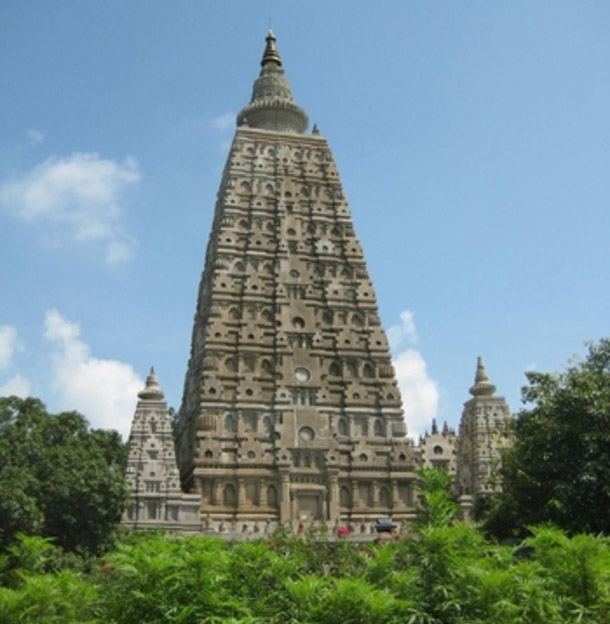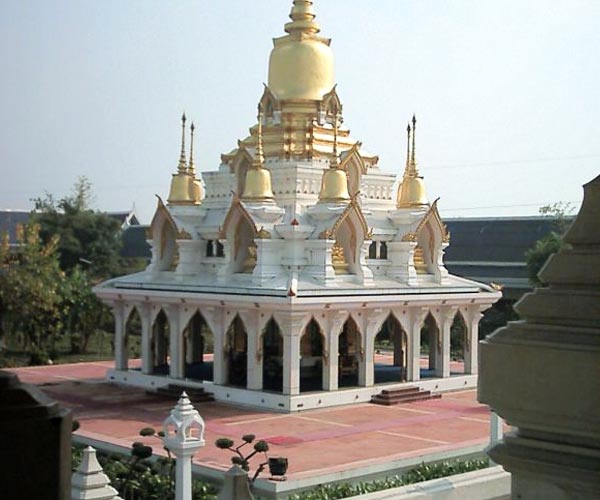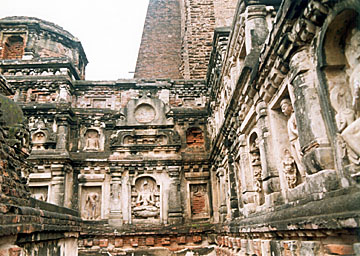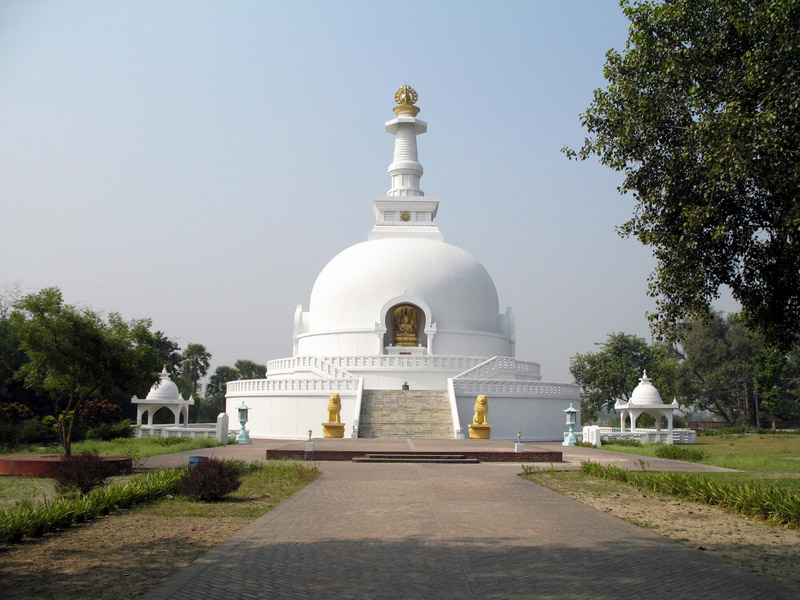Best of India Tours
- Golden Triangle Tour- Best of India & Nepal
- Classical Rajasthan
India Cultural Tours
- Images of North India- Karnataka Heritage
- Rajasthan & Goa Tour
Discover India Tours
- Grand India Tour- North to South India
- Central to South India
Rajasthan Tours
- Classical Rajasthan Tour- Golden Triangle Tour
- Grand Mughal Tour
India Luxury Trains
- Palace on Wheels- The Golden Chariot
- India Deccan Odyssey
- The Indian Maharaja
- Royal Rajasthan on Wheels
Nepal Tours
- Glimpses of Nepal- Buddhist Pilgrimage
- Nepal River Rafting
- Destinations of Nepal
- Nepal General Info
India Wildlife Tours
- North India Wild Life- South India Wildlife
Tibet Tours
- Tibet Monastery Tours- Explore Tibet
- Destinations of Tibet
Spa & Yoga Tours
- Ananda in Himalayas- Yoga & Meditation
Adventure Tours
- Manali Safari Tour- Himalayan Trekking
- Horse Safari
Bodhgaya

It was in Bodhgaya under the Bo tree that Gautama, the prince, attained enlightenment to become the Buddha. King Ashoka erected a shrine near the Bodhi tree which was replaced by Mahabodhi Temple in the 2nd century BC. It houses a gilded image of the Buddha in the pose signifying enlightenment; there are carvings on the stupas depicting tales from Buddha's lives. The original Bodhi tree was said to have been destroyed and the present tree behind the temple complex is believed to come from the sapling which was carried to Sri Lanka from the original tree and then brought back to Bodhgaya.
How To Reach -
 By Air:The nearest airport is at Gaya, 12 km away.
By Air:The nearest airport is at Gaya, 12 km away.
 By Rail:The nearest railhead is at Gaya, 12 km away.
By Rail:The nearest railhead is at Gaya, 12 km away.
 By Road:Bodhgaya is connected by road to Gaya, 12 km, to the Delhi - Calcutta highway junction (on Grand Trunk Road), Dobhi 22 km and Patna 109 km (via Jahanabad) or 181 km via Rajgir.NALANDA (62 KM) RAJGIR (46 KM)
By Road:Bodhgaya is connected by road to Gaya, 12 km, to the Delhi - Calcutta highway junction (on Grand Trunk Road), Dobhi 22 km and Patna 109 km (via Jahanabad) or 181 km via Rajgir.NALANDA (62 KM) RAJGIR (46 KM)
Rajgir
Rajgir had more of these landmarks than other centers: Venuvana, the bamboo brake where the Buddha and his disciples lived; Karnada Tank, where the Buddha used to bathe; Jivakamarvana, the orchard presented to the Buddha by the physician Jivaka; Griddakuta Hill (the hill of vultures) from where the Buddha delivered his sermons and the Sattapani Cave, where the First Buddhist Council was convened. The first Buddhist structures at Rajgir were raised when Ajatsatni built a monastery, and a stupa over his share of the Buddha's ashes. That reliquary is now a mound

used as a graveyard. Treading the paths which the Buddha took is becoming a pilgrimage for world peace. The Japanese much later have built the World Peace Stupa, with its gilded images of the Buddha.Adjacent to the hilltop wherethe Buddha used to deliver sermons, the stupa is visible for miles around. Access is by an aerial rope-way. The association of Buddhism with peace goes back to 250 B.C. when Emperor Asoka became a convert to it out of revulsion at the carnage in his conquest of Kalinga.
Rajgir also has the Nipponzan Myohoji, the Japanese temple, and the Centaur Hokke Club which offers some traditional facilities to Japanese pilgrims. The Burmese, too, have built a temple.There are also hot springs at Rajgir, around which Hindu and Jain temples have been built.
How To Reach -
 By Air:The nearest airport is at Gaya, 34 km away.
By Air:The nearest airport is at Gaya, 34 km away.
 By Rail:The nearest railhead is at Gaya, 34 km away.
By Rail:The nearest railhead is at Gaya, 34 km away.
 By Road:Rajgir is connected by road to : Patna 102 km, Nalanda 12 km, Gaya 34 km, Pawapuri 38 km, Bihar Sharif 25 km.
By Road:Rajgir is connected by road to : Patna 102 km, Nalanda 12 km, Gaya 34 km, Pawapuri 38 km, Bihar Sharif 25 km.
Nalanda

The site of Nalanda was one of the greatest monastic universities of the ancient world. Established in the 5th century B.C. it remained a live center of learning till the 12th century A.D. when it was destroyed by the invader Bakhtiar Khilji. Lord Mahavira and the Buddha both taught here for years. Hsuan Tsang. the Chinese traveler studied here in the 7th century A.D. and there is a monument in his memory. He was one amongst many of those from East and Southeast Asia who came here to study logic, meta-physics, medicine, prose composition and rhetoric.
The university of Nalanda offered Nalanda free educational and residential facilities to as many as 10,000 students and 2000 teachers, for it was supported by a number of villages. Its library, Ratna Sagar, is believed to have contained nine million volumes. It is not surprising, then, that the destruction of this university dealt a crippling blow toBuddhist education in India.
Excavations have revealed nine levels of occupation. Spread over 15 hectares stand the ruins of six temples, eleven monasteries, the Sariputra Stupa built by Asoka to honor the Buddha's first disciple, Ananda, and scattered chaityas or prayer halls. Sculptures, bas reliefs and frescoes are still to be seen amongst theruins. In 1951 an international center for Buddhist studies was founded. Another mordern institution is the Nava Nalanda Mahavir Research Centre treasuring many rare manuscripts. There is also a museum and a Thai Temple.
Vaishali
In Vaisali (which is also the birthplace of Lord Mahavira) there are the ruins of two stupas which were built to commemorate the Second Buddhist Council. The impressive Lion Capital was raised by Asoka to commemorate the Buddha's last sermon. There are also Jain temples and a museum.

How To Reach -
 By Air:The nearest airport is Patna, 56 km away.
By Air:The nearest airport is Patna, 56 km away.
 By Rail:Hajipur on the North Eastern Railway is the nearest station, 35 km away.
By Rail:Hajipur on the North Eastern Railway is the nearest station, 35 km away.
 By Road:Vaisali is connected by road to Patna (55 km), Muzaffarpur (36 km), and Hajipur (35 km).
By Road:Vaisali is connected by road to Patna (55 km), Muzaffarpur (36 km), and Hajipur (35 km).




